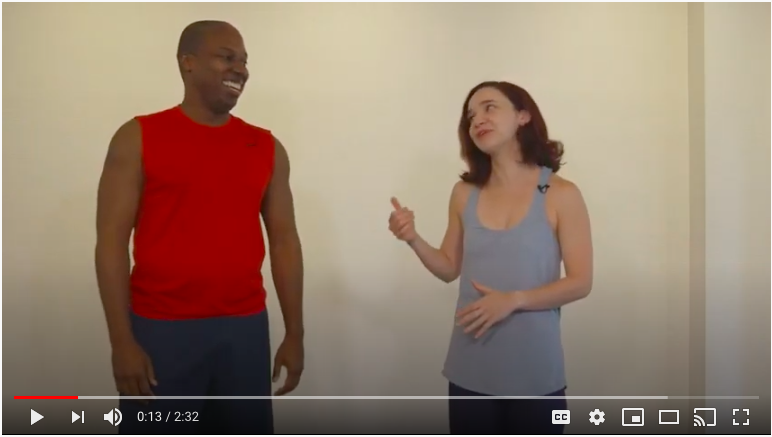Not moving around as much these days can have us feeling excess tension in our necks, backs, hips, and shoulders. When you stand up after surviving 52 hours of Zoom meetings in a row, it’s normal to feel super stiff and want to throw yourself on the couch like a sack of potatoes. But what if you were armed with a few easy ergonomic and posture solutions?
Better alignment and better posture create more pain-free bodies after all. Let’s start by talking about your work station.
Here are 3 steps towards a better seated work station setup:
- Make sure your back is against the chair (make sure you have a back to your chair at all!). If you don’t touch, an overball is a great prop to place between you and the chair. The ball only needs to be inflated enough to fill the space. One option is to start with it in your lumbar curve and adjust it to where it feels the most comfortable. Another effective technique is changing its position every 30 minutes or so. This will provide the most restorative and supportive approach for your back. Why an overball instead of a pillow? The instability of the ball makes your muscles fire just enough to be active, and active muscles are more supportive!
- Can you read your screen without leaning into your computer? Maybe it’s time to raise your screen up or bring it forward. For some people a separate keyboard on a different level can make a big difference.
- Do your feet touch the ground or are you on your tippy toes? Shout out to my short people but pull up a book, step stool or whatever will get the job done to help you achieve a 90 degree angle in your hips and knees with both heels and toes on the same level. Conversely, if you’re on the taller side and find yourself sitting twisted because your knees hit the table, guess what? It’s time to raise the table up or find somewhere else to sit. Collapsed and rotated is nobody’s friend when it comes to long periods of sitting.
But what about a standing desk you say? Well, let’s talk about how you’re standing. Some common challenges faced by the standing desk crew include:
- Standing with your feet too wide. It’s something many of us learn growing up in sports training as a version of the “ready” position. Yes, a wider stance may make you more ready to dash across a field to catch a ball. But, standing for long periods of time without the proper attention to postural alignment may be creating some tendencies for “hanging out” in an unsupported way. Try standing with your feet about 1-2 fists apart for optimal posture. It will be challenging at first but ultimately provide better support and lead to less tension and pain.
- Standing with knees locked is a common compensation pattern for making standing feel less muscularly taxing. However, it creates a chain effect where your body is hanging on your joints all up and down the spine instead of using your muscles. For example, locking your knees, often leads to pressing your hips forward (aka “hanging out” in your hips) instead of finding and utilizing the muscular strength of your glutes and thighs. This in turn creates a circumstance of hinging at your back, disengaging your core, and often leads to various pains.
In the video below, watch one of our clients and practitioners go through a standing exercise for supporting your posture with ease. It’s quick and effective, whether you’re standing at your desk or in the kitchen waiting for the coffee to brew.
Take a head to toe inventory with them as they ask, “Where is your weight shifting when you are standing? Are your knees locked? Are you letting your back slump? Where is your head sitting in association with your shoulders? And how do you know if the position you choose is the right one if no one is watching you?”
For more tutorials on flexibility, better breathing, and stabilizing the core click here.

